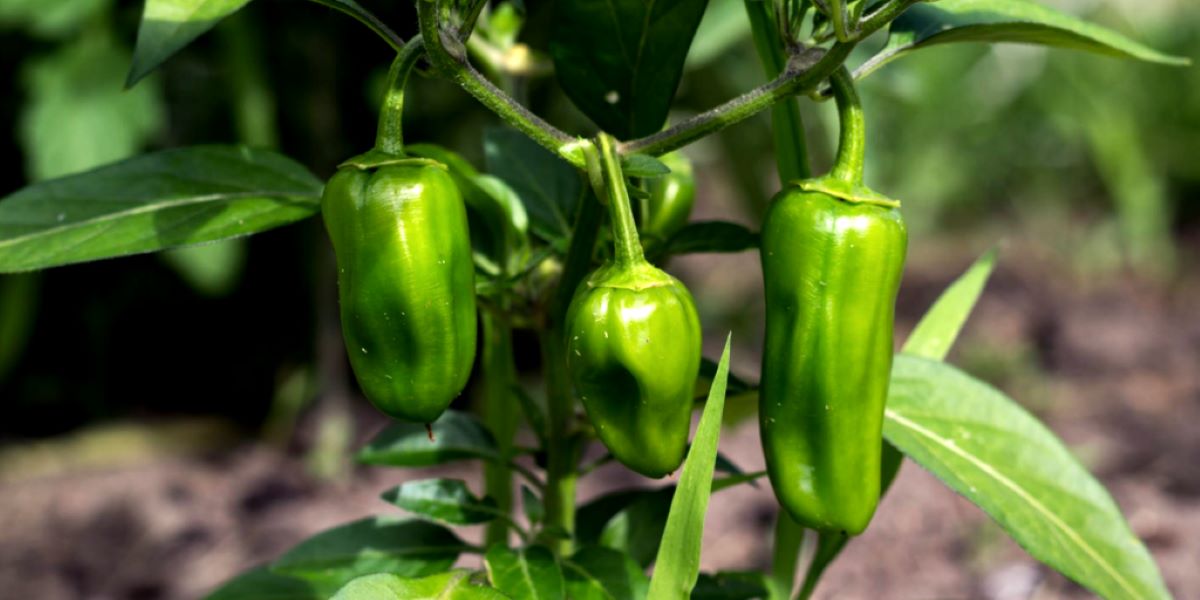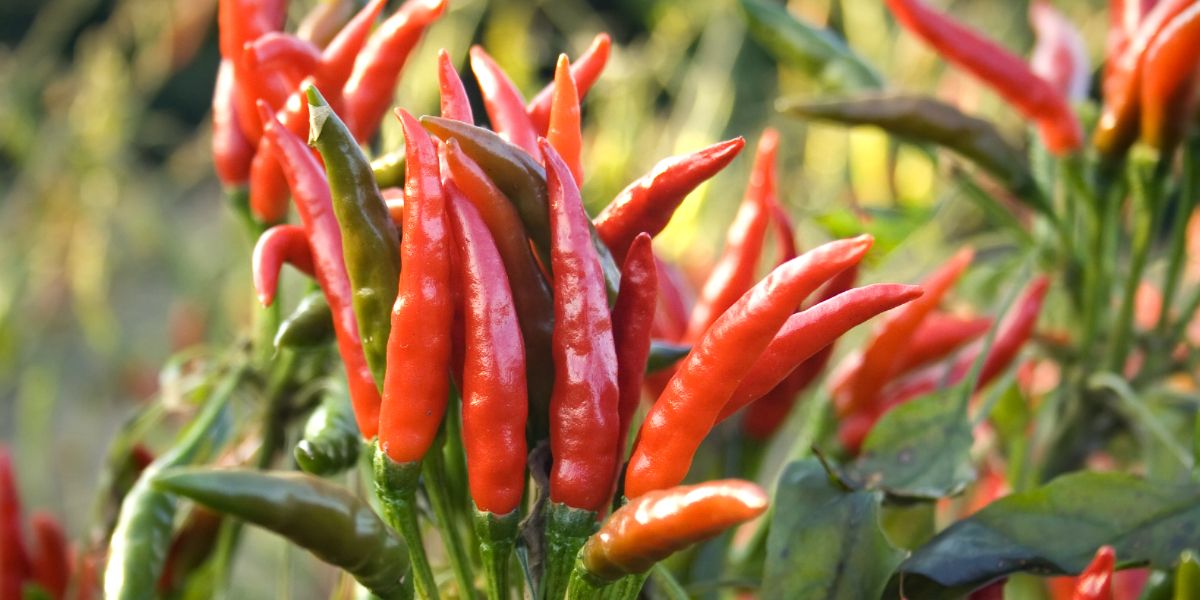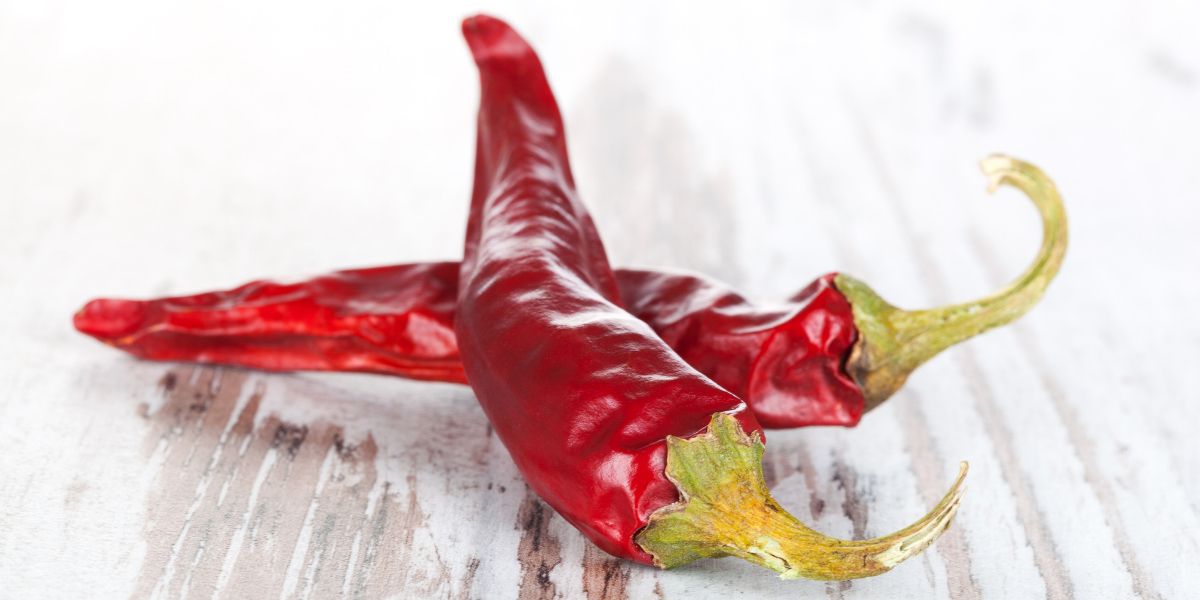What Is The Optimal Temperature For Growing Chilies?

In general, the optimal temperature for growing chili peppers is between 20°C and 27°C. For germinating seeds, slightly higher temperatures are best. Also, there exists a species of chili pepper that is better suited for cooler temperatures.
For many years, I have been growing different varieties of chili peppers. I have thus gained some knowledge in this area. Yet, to develop my understanding further, I have been researching various aspects of growing hot pepper plants.
Are you a chili pepper lover who wants to learn how to grow chili pepper plants at home? Look no further! Click below to find out which must-have books will guide you through the process of growing your own chili peppers...
So, in this article, I compiled some essential facts about temperatures and growing pepper plants. First, I'll discuss the temperatures for germinating chili seeds. Then, I'll discuss the temperatures for growing the chilies once the pepper seedlings are planted in the soil. These temperatures influence the timing of the planting of the chilies. To end the article, I will also mention the pepper species that enjoys cooler weather.
Table of Contents
Optimal germination temperatures for chili seedlings
For germinating chili seeds, the ideal temperature is between 27°C and 32°C.
These temperatures can be achieved in a temperature-controlled greenhouse or using a seedling heat mat to warm the seedlings.
When growing peppers from seed, it is okay if you do not have the opportunity to create such temperatures for your seedlings. The chili seeds can germinate at lower temperatures too. Temperatures from 21°C and upwards are acceptable. Germination will happen at a slower rate in that case, though. It is also possible that the germination rate will be lower.
Optimal growing temperatures for chilies
Pepper plants grow optimally at temperatures between 20°C and 27°C. A few degrees higher or lower won't make a big difference. This is not only the case for hot peppers but also sweet peppers (also known as bell peppers).
No chili plants will survive frost. If the temperatures go below 0°C, you can assume that this will kill your plant. Already at 6°C, you can expect your pepper plant to be damaged. Leaves and flowers will drop off the plant.
Hot peppers will need a temperature above 16°C to thrive.
If your peppers grow outside in a climate where there are cold winters, then to be safe, it is best to bring the plants indoors or in a greenhouse as the temperatures move down towards 10°C. Keep the plants inside as long as the outdoor temperatures stay below 10°C. Keeping the plant indoors is also referred to as 'overwintering.'
On the other end of the temperature spectrum, you can expect your chili pepper plant to start suffering at temperatures above 36°C.
Timing the growth of chili peppers according to the temperatures
Given that temperatures significantly impact how your peppers will grow outside, it will likely require some planning when starting them. You'll want to make sure that your chilies always grow in as optimal as possible temperatures.
In a cooler climate, this means that you might start seedlings indoors at the end of the winter. Starting the seedlings would be in January or February in the Northern Hemisphere. You'd need to keep the seedlings warm inside and plant them out when the temperatures are consistently above 10°C outside.
Most definitely avoid any frost for your peppers.
The harvest of peppers can then start taking place around midsummer.
At the end of the summer, when your chilies are no longer producing fruit, then you may start pruning them and making them ready for overwintering. You should then bring the plants inside before the temperatures drop below 10°C.
If the period with optimal temperatures in your location is too short or not even present, you may consider using cold frames, an unheated hoop house, or keeping your plants in a greenhouse.
If the weather is somewhat unpredictable in your region, you can also consider planting your peppers in a movable container. By growing the chilies in this manner, you can quickly move them from outside to inside a greenhouse when needed.
When buying hot pepper seeds, you'll find that the package often mentions the optimal temperatures and when it is best to plant out your chilies.
The chili pepper that tolerates the lowest temperatures
The chili species that likes colder weather is the Capsicum Pubescens. Some of the chili varieties from this species are known as the Manzano Peppers or Rocoto Peppers.
This chili species originates from the Andean mountains. The origin explains why the chili plants enjoy cooler temperatures. Do note that it does not mean that it is frost tolerant because this species may be cold tolerant!
The ideal temperatures for growing plants from this species are 7°C to 16°C. This temperature range is lower than the perfect temperatures for the other pepper species, which is 20°C to 27°C.
Likewise, should you wish to grow this species in a hot(ter) climate, you'll need to place it in the shade, such that it doesn't get overheated.
If this pepper species is allowed to grow in optimal temperatures, you can expect it to live up to 15 years.
References
- https://www.instructables.com/12-Tips-on-Growing-Hot-Chilli-Peppers-in-a-Cold-Cl/
- https://dengarden.com/gardening/Will-My-Pepper-Plants-Stay-Alive-at-38-Degrees
- https://greenupside.com/what-is-the-lowest-temperature-pepper-plants-can-tolerate/
- https://homeguides.sfgate.com/temperature-peppers-germinate-46236.html
- https://www.sandiaseed.com/blogs/news/a-pepper-for-partial-shade-cooler-weather



